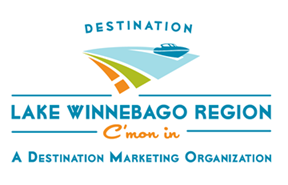How to Maximize Your Event Budget in 2025
01/17/2025
By Amanda N. Wegner
While inflation is slowly receding and interest rates are starting to move downward, meeting and event planners continue to face budget pressures, with no relief in sight heading into 2025.
“Several factors are currently impacting meeting and event budgets,” says Amie Devine, CMP, director of global events at The Hybrid Group and a SITE Chicago Wisconsin ambassador and board member. “These influences come from various sources, including economic conditions, rising travel costs, and shifting trends in how events are planned and executed. The most impactful factors currently are inflation, travel costs, labor shortages and staffing, price increases for basic event supplies, software licenses and integration costs, and attendee expectations, wanting more immersive event experiences.”
Whether in whole or in part, these influences make budgeting a constant challenge for planners as they work to strike a balance among increasing costs, client demands and quality while also delivering on event goals and objectives.
“The key is to be resourceful, focus on value-driven decisions, and constantly look for opportunities to optimize costs without sacrificing quality,” says Devine.
To address these pressures and deliver quality events without breaking the bank, we asked three meeting and event professionals for creative budgeting tips they’ve leveraged or have seen others successfully execute.
START WITH YOUR WHY
Before anything else, clarify the why of your meeting or event.
“Like always, try to define — or get your stakeholders to define — what the objective or purpose of the meeting is,” says Rachel Best, CMP, who has over 20 years of experience with a focus on non-profits, government and international meetings, incentives, conferences and exhibitions (MICE). “By doing this at the onset, you help save time and resources by not navigating the wrong path to success.”
Michelle Haider, CMP, director of event experience for VISIT Milwaukee, agrees with this top tip.
“Identify the main goals and top objectives of your event and allocate your budget accordingly,” says Haider, whose team assisted 275 clients in 2024 to ensure they had successful events in Milwaukee. “For instance, if creating a ‘wow’ factor for a board dinner is a priority, you should focus more of your resources on food and beverage, décor and lighting. Conversely, lower-priority items like printing and signage can receive less of your budget.”
SUBSTITUTE AND SCALE
Critically examine the event’s individual aspects and the event as a whole to identify efficiencies or opportunities to substitute or scale. For instance, why commit to a two- hour opening reception block if the room thinned after an hour in years past? Want to avoid the cost of all-day coffee service? Work with the venue to ensure their retail outlet is open or bring in an outside vendor if allowed to run a self-pay station.
Recently, Best scaled an event by shortening the length of the whole meeting by substituting some of the content and programming with virtual webinars or classes ahead of a meeting. This allowed her to shorten the event as a whole while still having an onsite aspect, which led to better collaboration and networking.
MAXIMIZE YOUR ‘SHIPS
Devine and Haider both recommend leveraging partnerships and sponsorships to help cover costs. For revenue-generating events, consider offering tiered sponsorship opportunities and ticket pricing levels. This strategy, says Haider, can attract a broader range of participants with different budget levels while still covering event costs.
While paid partnerships and sponsorships are fantastic ways to increase resource availability, don’t overlook in-kind support.
“A great strategy for creative budgeting is to leverage in-kind donations and partnerships,” says Haider. “By establishing agreements with businesses you frequently work with, you can negotiate discounts or in-kind services in exchange for ongoing contracts. This not only reduces costs but also builds long-term partnerships with trusted vendors.”
Remember that “in-kind” can also mean volunteer assistance.
“Tasks that were previously outsourced to paid services, such as registration or event setup, can often be handled effectively by volunteers,” says Haider.
RETHINK YOUR PLATES AND GLASSES
With food and beverage, negotiate minimums with venues to help offset rental costs; this allows planners to allocate more resources toward other key aspects of the event.
Also, make food swaps. Best has successfully changed some event meals from traditional meat/protein options to vegetarian options — think beans, greens or eggs, not more expensive plant-based meat alternatives.
“They are often cheaper and come a shorter distance as well as being a more sustainable practice,” she says. “The right chef can make these fancy enough and tasty.” She adds that with more people making more healthful choices in their lives, offering more vegetarian options is not as “shocking” as it once was.
Another creative touch Best has seen is offering a mocktail party instead of a traditional cocktail party. While it is still more expensive than taking attendees to a local establishment, omitting the alcohol will help bring costs down.
Simplified menus are another popular strategy, adds Haider, with many planners opting for heavy appetizers that follow a cohesive theme rather than a more expensive plated meal. “This approach often has a greater visual and experiential impact for attendees while keeping costs down,” she says.
GO LOCAL
All three meeting professionals recommend local sourcing as a cost-saving option. Particularly for national associations, Haider notes, “using local vendors has been a smart choice, as it eliminates expenses related to shipping and travel while also supporting the local economy.”
Best agrees but cautions that this approach can mean more work for the planner.
“The ‘smaller fish’ of local companies are often a lot ‘hungrier’ for your business and willing to do discounts.” But don’t forget to check for references, she adds.
PUT IN SOME ELBOW GREASE
Speaking of more work for the planner, for those willing to put in some sweat equity, one tactic Best often uses is purchasing furniture from Wayfair for the stage or tradeshows. This typically runs at one-third the cost of renting, even with drayage or shipping. (The Wayfair Pro account is free and offers discounts.) After the event, she works through the venue’s sustainability program to get the items donated or, in some cases, has worked with local shelters directly on donations.
“You do have to build the furniture with your own staff then or hire an onsite contractor, but it is still a lot cheaper and with better results,” she says. “I can now whip up a stool in 15 minutes.”











